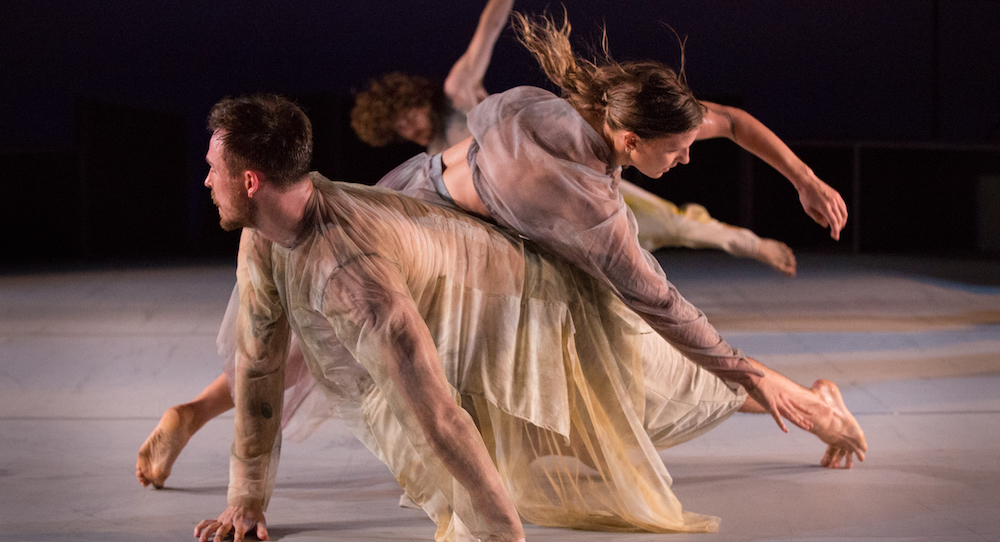Collaboration is a central pillar of our creative process, and Dust is a true testament to inherent power of creating space in which people feel not only safe but have a genuine desire to contribute, according to choreographer, performer and Artistic Director of Dancenorth Kyle Page, discussing the innovative partnership with Tasmanian architectural firm Liminal Spaces to develop the set for Dust.

Dancenorth’s ‘Dust’. Photo by Amber Haines.
The creative process involved all of the contributing artists from the beginning. Page describes the first two-week creative development process for the work as a space in which anything could arise. “We were not outcome-driven and dissolved the demarcation of roles,” he says. “Nik, the lighting designer, created some choreography; the dancers moved lights around; Peta and Elvio tasked the dancers, and even danced themselves.”
Dust explores the architecture of personal, social and cultural inheritance. The performance includes a score created live by violinist Jessica Moss, with costumes by Harriet Oxley, and lighting by Nik Pajanti. The designs reflect the structures, barriers and borders of experience, and express the architecture of restriction and opportunity.

Dancenorth’s ‘Dust’. Photo by Amber Haines.
“We’ve always been interested in the relationship between space and body, how one informs the other and the ephemerality of this interaction,” says Elvio Brianese, one of the architects from Liminal Spaces. “While we are trained as architects and industrial designers, working in contemporary dance is particularly refreshing for us, as it allows us to test ideas and conceptual thinking through abstract expression and interpretation, which sharpens our creative agility. Our background is shaped by a finely tuned sensibility in the creation of space and the way people interact with it, so the performance space is a natural fit.”
What emerged from the creative development and subsequent developments was a transformative design that allows the dancers to manipulate and shift the spatial onstage environment. The main spatial installation appears at first as a monolithic, seamless barrier, but its modularity and fragmentation is revealed as layers are peeled, leading to transformation. The dancers interact with the “wall” to create changing stage configurations that add layered meaning to the performance, deconstructing and reconstructing different scenes as the themes of the performance shift.

Dancenorth’s ‘Dust’. Photo by Amber Haines.
Page describes the enigmatic experience of choreography as “things just appearing at the right time… or not,” and adds, “The key is to recognise when rightness appears and then trust it. Which doesn’t mean to say the rightness appears and the idea is signed off as done and simply left alone, more a direction avails itself and it feels right to follow that direction without trying to predetermine an outcome. Openness, curiosity and the seeking of rightness is undoubtedly one of the things that keeps us coming back time and time again even if we don’t know where we are heading. It just feels right to do so.”
Dust will be presented at Sydney Festival from 9 – 13 January. For more information, check out www.sydneyfestival.org.au/events/dust and www.dancenorth.com.au.
By Tamara Searle of Dance Informa.

















